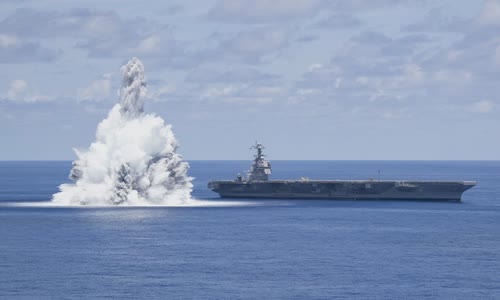The US consecutively tested explosion edge USS Gerald R. Ford seemed to send messages that were not afraid of Chinese aircraft killer missiles.
The US Navy on August 9 announced USS Gerald R. Ford to complete the strength test with three trigger rates of 18 tons of explosives right next to the ship, causing a concussion of 3.9 degrees earthquake.

Photo:
The US Naval officials said that after three consecutive explosions were conducted from June 24, the Gerald Ford carried less damage than expected, not seriously damaging, not causing water to flow into compartments or fire
Chinese military experts Tong average said that in addition to collecting data and the US Navy announced information about comprehensive shock test (FSST) with Gerald Ford battleship to send messages to China and Russia that ship
This is a modal window.
Beginning of Dialog Window.
End of Dialog Window.
The explosion with 18 tons of explosives is greater than the destruction of any normal missile or torpedo warheads.
Ballistic missiles or superpositions can carry electromagnetic impulse weapons that are detonated at a large height and cause damage to the carrier, even the type of fighting from the fight, Mr. Tong said.
China is developing the ballistic missile DF-21D and DF-26, dubbed the aircraft killer.
In FSST tests, the distance between the Ford carrier and the location of explosive activation is a closer time.
Brian Metcalf, Director of the US Navy Navy Future Air Carrier Program, said FSST proved that the Ford battleship could withstand terrible shocks and continue to operate in harsh conditions.
USS Gerald R. Ford in FSST test on July 16.
FSST is designed to check the resistance of body frame and system on battleships in a simulated combat environment.
USS Gerald R. Ford carrier was started in 2009, launched 4 years later and handed over to the US Navy in May 2017.



 Brad Wales
Brad Wales







